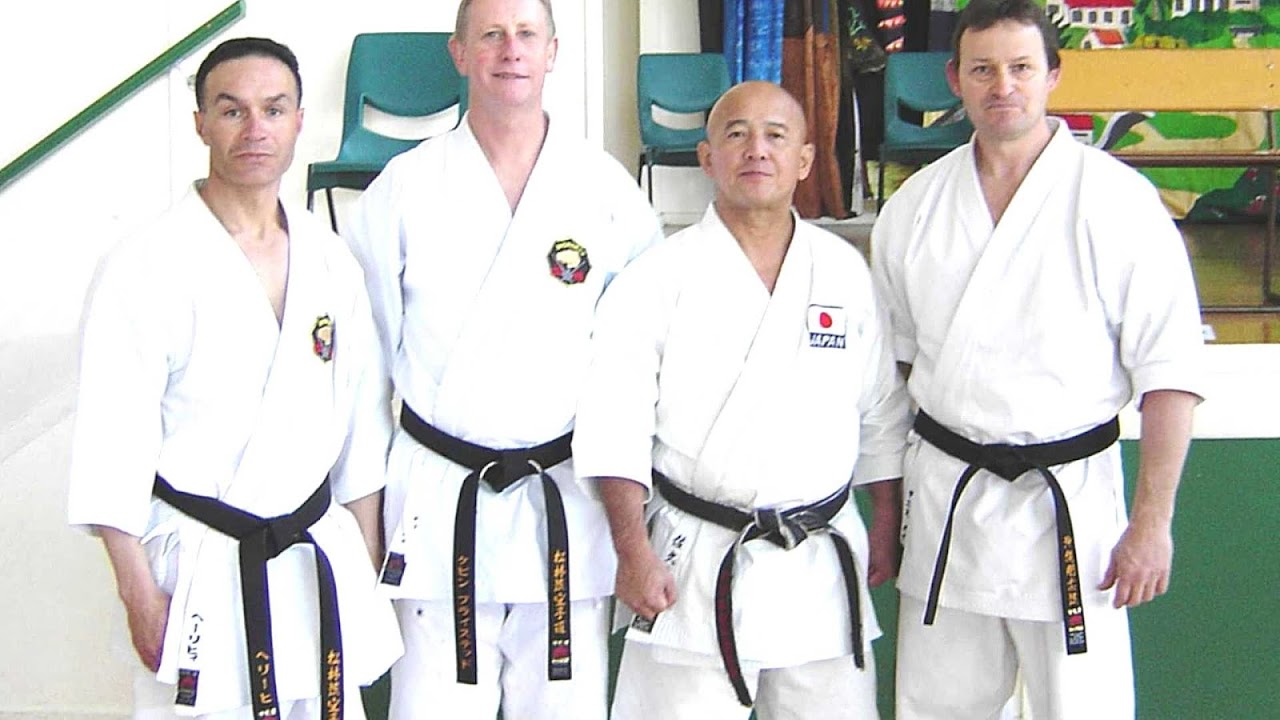
Sh?rin-ry? (???) is one of the major modern Okinawan martial arts and is one of the oldest styles of karate. It was named by Choshin Chibana in 1933, but the system itself is much older. The characters ??, meaning "small" and "forest" respectively and pronounced "sh?rin" in Japanese, are also used in the Chinese and Japanese words for Shaolin Kung Fu. "Ry?" means "school". Sh?rin-ry? combines elements of the traditional Okinawan fighting styles of Shuri-te.

Maps, Directions, and Place Reviews
History
Chosin Chibana was a top student of the great master of shuri-te, Anko Itosu. Anko Itosu was the top student of Matsumura S?kon, who was a renowned warrior of his time; bodyguard to three kings of Okinawa, he has been called the Miyamoto Musashi of Okinawa and was dubbed bushi, or warrior, by his king. However, while S?kon is often referred to as the "founder" of Shuri-te, he did not invent all of its components. In 1933, Chosin Chibana chose to name his style Shorin-ryu in honor of its samurai roots and to differentiate it from other styles that were being modified from the original teachings of Anko Itosu. Generally, Okinawan karate schools did not have individual names for styles like schools in Japan. Several branches of traditional Shorin-Ryu exist today in both Okinawa and the Western World. While there is a more concentrated population of practitioners in its birthplace of Okinawa, Shorin-Ryu Karate has had many high dan grades outside Okinawa.
Okinawan Shorin Ryu Karate Video
Training
Sh?rin-ry? is generally characterized by natural breathing, natural (narrow, high) stances, and circular, rather than direct movements. Sh?rin-ry? practitioners will say that correct motion matters, being able to move quickly to evade violence by having fluid movements and flexible positions is quite important, and that a solid structure is very important for powerful moves. Stances that are too deep will most likely make body movement very difficult. Another of the features in this system is how the student is taught to punch. Generally, there is neither a horizontal or vertical punch in Shorin Ryu. Punches are slightly canted to the inside, with the largest knuckle of the fore finger (third from the tip) in vertical alignment with the second knuckle of the pinky finger. It is believed that this position is key in lining up the bones of the arm and creates a faster, more stable and powerful strike.

Kata
Some of the key kata in Sh?rin-ry? are:p. 30
- Fugyugata Kata
- Kihons
- shodan
- nidan
- sandan
- yondan
- godan
- Pinan Kata
- shodan
- nidan
- sandan
- yondan
- godan
- Naihanchi Kata
- shodan
- nidan
- sandan
- Ananku
- Wankan
- Rohai
- Wanshu
- Passai
- sho
- dai
- Gojushiho
- Chinto
- Kusanku
- sho
- dai
- Seisan
- Gorin
The study of weapons only starts at dan-level, and weapon kata are not standardised across the style.p. 45
Branches
- Sh?gor? Nakazato Sh?gor? Nakazato (?? ??? Nakazato Sh?gor??, August 14, 1920 - August 24, 2016)
- Sh?rin-ry? Reihokan
- Sh?rin-ry? Shid?kan normally called Shid?kan or Okinawan Shid?kan
- Shorinkan
- Shorinkan USA Lineage
- Sh?rin-ry? Seibukan
- Sh?rin-ry? Kyud?kan normally called Kyud?kan
- Oshukai
- Chubu Shorin-ryu
- Shorin-ryu (Shaolin) also known as Shobayashi.
- Ryukyu Shorin-Ryu
- Kyobukan Shorin-Ryu
- Matsumura Seito Hakutsuru Shorin-Ryu
- Matsumura Shorin Ryu
- Jyoshinmon Shorin Ryu
- Shima-ha Shorin Ryu

Ranks
In 1924, Gichin Funakoshi adopted the Dan system from judo founder Kan? Jigor? using a rank scheme with a limited set of belt colors. In 1960, this practice was adopted in Okinawa.
In a Ky?/Dan system, the beginner grade is a higher-numbered ky? (e.g., 7th Ky?) and progress is toward a lower-numbered Ky?. The Dan progression continues from 1st Dan (Shodan, or 'beginning dan') to the higher dan grades. Ky?-grade karateka are referred to as "color belt" or mudansha ("ones without dan"); Dan-grade karateka are referred to as yudansha (holders of dan rank). Yudansha typically wear a black belt.
Requirements of rank differ among styles, organizations, and schools. Ky? ranks stress stance, balance, and coordination. Speed and power are added at higher grades. Minimum age and time in rank are factors affecting promotion. Testing consists of demonstration of technique before a panel of examiners. Black belt testing is commonly done in a manner known as shinsa, which includes a written examination as well as demonstration of kihon, kumite, kata, and bunkai (applications of technique).
In Sh?rin-ry?, one possible rank (belt) progression is listed below: There are many others. For instance, the largest organization in North America does not use yellow, orange, blue, or purple belts.: Nor are the colors or orders consistent from school to school within an organization.
In the USA, the mudansha generally are:
- White Belt (7th Ky?)
- Yellow Belt (6th Ky?)
- Orange Belt (5th Ky?)
- Purple Belt (4th Ky?)
- Green Belt (3rd Ky?)
- Blue Belt (2nd Ky?)
- Brown Belt (1st Ky?)
In the USA some of the styles' yudansha follow this system:
- Black Belt (1st to 3rd Dan)
Master Level
- Red and Black Checkered Belt (4th to 5th Dan)
- Red and White Checkered Belt (6th to 8th Dan)
- Red Belt (9th to 10th Dan)
Note: The Beikoku Shidokan Association follows the Judo yudansha belt system:
Black Belt for 1st through 6th Dan
Red and White Checkered/paneled Belt for 7th and 8th Dan
Red Belt for 9th and 10th Dan.
Source of the article : Wikipedia


EmoticonEmoticon